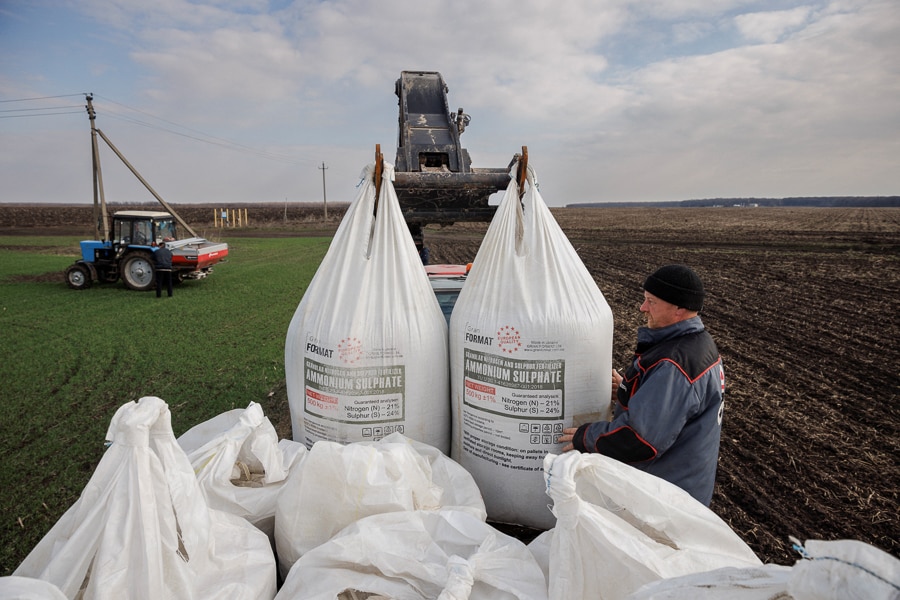
The economic consequences of the war
Since there is currently no clear end in sight to the conflict, we should also not expect elevated commodity prices to return to normal any time soon
 A local farm worker unloads fertiliser from a truck to use on a wheat field near the village of Yakovlivka after it was hit by an aerial bombardment outside Kharkiv, as Russia's attack on Ukraine continues, April 5, 2022. The wheat has been sown for the coming season but nobody in the farming village knows if it will be harvested.
Image: Thomas Peter / Reuters
A local farm worker unloads fertiliser from a truck to use on a wheat field near the village of Yakovlivka after it was hit by an aerial bombardment outside Kharkiv, as Russia's attack on Ukraine continues, April 5, 2022. The wheat has been sown for the coming season but nobody in the farming village knows if it will be harvested.
Image: Thomas Peter / Reuters
On February 24 this year, Russian troops marched into Ukraine. The invasion has prompted much consternation over the implications for geopolitical stability in Europe and the international order, we should not forget that the war has both shorter and longer run consequences for the international economy.
For starters, Russia is a major supplier of the world’s commodities, including its leading fertilizer, gas, and wheat exporter. Ukraine is itself the world’s fourth’s largest corn exporter, and its fifth largest exporter of wheat and iron. At the minimum, the war would mean higher prices when pay our electricity bills, put petrol in our cars, and buy bread and cereal from the market.
And indeed it has. Inflation in food, energy, and metals—as measured by the CRB index, a composite indicator of commodity prices—had taken a breather in the final quarter of 2021, and had even softened in December. But it has resumed an upward march this year, and currently hovers at levels last reached a decade ago, during the tail end of the last global commodity crisis.
And since there is currently no clear end in sight to the conflict, we should also not expect elevated commodity prices to return to normal any time soon. If anything, to the extent that spring plantings are disrupted—food crops take time to grow, after all—food price inflation looks set to potentially increase even further in the near future. This does not bode well for economies that are only just digging their way out of the pandemic, especially in the emerging and developing world, which had been disproportionately hit by the effects of Covid-19.
Up till recently, the world had been bracing for a rise in interest rates, as the Federal Reserve and other major central banks began what they had hoped would be a measured rate hike cycle. But stubbornly high inflation, now lent further fuel by the war, has meant that rate rises would need to be quicker and more decisive. This is unwelcome news for growth, and global Wall Street has responded accordingly, with markets worldwide retreating by between 10 and 20 percent since the start of the year.







